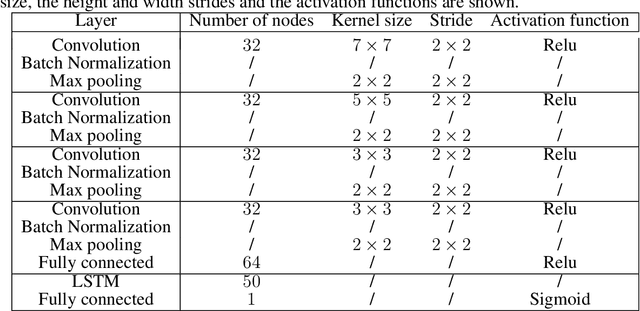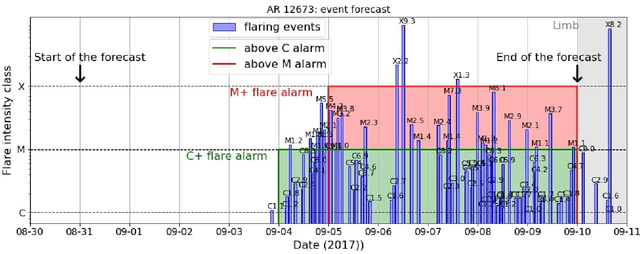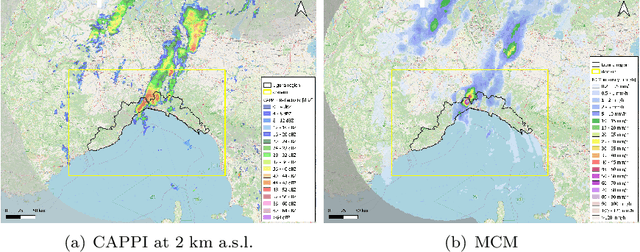Sabrina Guastavino
Deep Learning for Active Region Classification: A Systematic Study from Convolutional Neural Networks to Vision Transformers
Oct 23, 2024Abstract:A solar active region can significantly disrupt the Sun Earth space environment, often leading to severe space weather events such as solar flares and coronal mass ejections. As a consequence, the automatic classification of active region groups is the crucial starting point for accurately and promptly predicting solar activity. This study presents our results concerned with the application of deep learning techniques to the classification of active region cutouts based on the Mount Wilson classification scheme. Specifically, we have explored the latest advancements in image classification architectures, from Convolutional Neural Networks to Vision Transformers, and reported on their performances for the active region classification task, showing that the crucial point for their effectiveness consists in a robust training process based on the latest advances in the field.
Multimodal Flare Forecasting with Deep Learning
Oct 21, 2024Abstract:Solar flare forecasting mainly relies on photospheric magnetograms and associated physical features to predict forthcoming flares. However, it is believed that flare initiation mechanisms often originate in the chromosphere and the lower corona. In this study, we employ deep learning as a purely data-driven approach to compare the predictive capabilities of chromospheric and coronal UV and EUV emissions across different wavelengths with those of photospheric line-of-sight magnetograms. Our findings indicate that individual EUV wavelengths can provide discriminatory power comparable or better to that of line-of-sight magnetograms. Moreover, we identify simple multimodal neural network architectures that consistently outperform single-input models, showing complementarity between the flare precursors that can be extracted from the distinct layers of the solar atmosphere. To mitigate potential biases from known misattributions in Active Region flare catalogs, our models are trained and evaluated using full-disk images and a comprehensive flare event catalog at the full-disk level. We introduce a deep-learning architecture suited for extracting temporal features from full-disk videos.
Forecasting Geoffective Events from Solar Wind Data and Evaluating the Most Predictive Features through Machine Learning Approaches
Mar 14, 2024Abstract:This study addresses the prediction of geomagnetic disturbances by exploiting machine learning techniques. Specifically, the Long-Short Term Memory recurrent neural network, which is particularly suited for application over long time series, is employed in the analysis of in-situ measurements of solar wind plasma and magnetic field acquired over more than one solar cycle, from $2005$ to $2019$, at the Lagrangian point L$1$. The problem is approached as a binary classification aiming to predict one hour in advance a decrease in the SYM-H geomagnetic activity index below the threshold of $-50$ nT, which is generally regarded as indicative of magnetospheric perturbations. The strong class imbalance issue is tackled by using an appropriate loss function tailored to optimize appropriate skill scores in the training phase of the neural network. Beside classical skill scores, value-weighted skill scores are then employed to evaluate predictions, suitable in the study of problems, such as the one faced here, characterized by strong temporal variability. For the first time, the content of magnetic helicity and energy carried by solar transients, associated with their detection and likelihood of geo-effectiveness, were considered as input features of the network architecture. Their predictive capabilities are demonstrated through a correlation-driven feature selection method to rank the most relevant characteristics involved in the neural network prediction model. The optimal performance of the adopted neural network in properly forecasting the onset of geomagnetic storms, which is a crucial point for giving real warnings in an operational setting, is finally showed.
Greedy feature selection: Classifier-dependent feature selection via greedy methods
Mar 08, 2024



Abstract:The purpose of this study is to introduce a new approach to feature ranking for classification tasks, called in what follows greedy feature selection. In statistical learning, feature selection is usually realized by means of methods that are independent of the classifier applied to perform the prediction using that reduced number of features. Instead, greedy feature selection identifies the most important feature at each step and according to the selected classifier. In the paper, the benefits of such scheme are investigated theoretically in terms of model capacity indicators, such as the Vapnik-Chervonenkis (VC) dimension or the kernel alignment, and tested numerically by considering its application to the problem of predicting geo-effective manifestations of the active Sun.
AI-FLARES: Artificial Intelligence for the Analysis of Solar Flares Data
Jan 02, 2024Abstract:AI-FLARES (Artificial Intelligence for the Analysis of Solar Flares Data) is a research project funded by the Agenzia Spaziale Italiana and by the Istituto Nazionale di Astrofisica within the framework of the ``Attivit\`a di Studio per la Comunit\`a Scientifica Nazionale Sole, Sistema Solare ed Esopianeti'' program. The topic addressed by this project was the development and use of computational methods for the analysis of remote sensing space data associated to solar flare emission. This paper overviews the main results obtained by the project, with specific focus on solar flare forecasting, reconstruction of morphologies of the flaring sources, and interpretation of acceleration mechanisms triggered by solar flares.
A comprehensive theoretical framework for the optimization of neural networks classification performance with respect to weighted metrics
May 22, 2023Abstract:In many contexts, customized and weighted classification scores are designed in order to evaluate the goodness of the predictions carried out by neural networks. However, there exists a discrepancy between the maximization of such scores and the minimization of the loss function in the training phase. In this paper, we provide a complete theoretical setting that formalizes weighted classification metrics and then allows the construction of losses that drive the model to optimize these metrics of interest. After a detailed theoretical analysis, we show that our framework includes as particular instances well-established approaches such as classical cost-sensitive learning, weighted cross entropy loss functions and value-weighted skill scores.
Physics-driven machine learning for the prediction of coronal mass ejections' travel times
May 17, 2023Abstract:Coronal Mass Ejections (CMEs) correspond to dramatic expulsions of plasma and magnetic field from the solar corona into the heliosphere. CMEs are scientifically relevant because they are involved in the physical mechanisms characterizing the active Sun. However, more recently CMEs have attracted attention for their impact on space weather, as they are correlated to geomagnetic storms and may induce the generation of Solar Energetic Particles streams. In this space weather framework, the present paper introduces a physics-driven artificial intelligence (AI) approach to the prediction of CMEs travel time, in which the deterministic drag-based model is exploited to improve the training phase of a cascade of two neural networks fed with both remote sensing and in-situ data. This study shows that the use of physical information in the AI architecture significantly improves both the accuracy and the robustness of the travel time prediction.
Operational solar flare forecasting via video-based deep learning
Sep 12, 2022



Abstract:Operational flare forecasting aims at providing predictions that can be used to make decisions, typically at a daily scale, about the space weather impacts of flare occurrence. This study shows that video-based deep learning can be used for operational purposes when the training and validation sets used for the network optimization are generated while accounting for the periodicity of the solar cycle. Specifically, the paper describes an algorithm that can be applied to build up sets of active regions that are balanced according to the flare class rates associated to a specific cycle phase. These sets are used to train and validate a Long-term Recurrent Convolutional Network made of a combination of a convolutional neural network and a Long-Short Memory network. The reliability of this approach is assessed in the case of two prediction windows containing the solar storm of March 2015 and September 2017, respectively.
Prediction of severe thunderstorm events with ensemble deep learning and radar data
Sep 20, 2021



Abstract:The problem of nowcasting extreme weather events can be addressed by applying either numerical methods for the solution of dynamic model equations or data-driven artificial intelligence algorithms. Within this latter framework, the present paper illustrates how a deep learning method, exploiting videos of radar reflectivity frames as input, can be used to realize a warning machine able to sound timely alarms of possible severe thunderstorm events. From a technical viewpoint, the computational core of this approach is the use of a value-weighted skill score for both transforming the probabilistic outcomes of the deep neural network into binary classification and assessing the forecasting performances. The warning machine has been validated against weather radar data recorded in the Liguria region, in Italy,
Score-oriented loss (SOL) functions
Mar 29, 2021



Abstract:Loss functions engineering and the assessment of forecasting performances are two crucial and intertwined aspects of supervised machine learning. This paper focuses on binary classification to introduce a class of loss functions that are defined on probabilistic confusion matrices and that allow an automatic and a priori maximization of the skill scores. The performances of these loss functions are validated during the training phase of two experimental forecasting problems, thus showing that the probability distribution function associated with the confusion matrices significantly impacts the outcome of the score maximization process.
 Add to Chrome
Add to Chrome Add to Firefox
Add to Firefox Add to Edge
Add to Edge